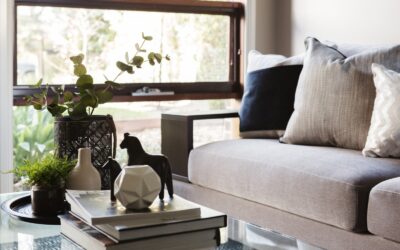Designing a small space can be a challenge, but with a sustainable approach, you can maximise both style and functionality. By focusing on thoughtful choices and innovative solutions, you can transform compact areas into beautifully efficient and eco-friendly havens. Here’s how to achieve a sustainable design in small spaces without compromising on elegance or practicality.
1. Multi-Functional Furniture: Efficiency Meets Elegance
In small spaces, multi-functional furniture is indispensable. Opt for pieces that serve dual purposes, such as a sofa bed, a coffee table with storage, or a dining table that can also be used as a workspace. These versatile items help you make the most of limited space while reducing the need for additional furniture. Look for high-quality, sustainably sourced materials to ensure that your multi-functional pieces are both stylish and eco-friendly.
2. Smart Storage Solutions: Maximising Every Inch
Effective storage is crucial in small spaces, and sustainable design offers numerous innovative solutions. Incorporate built-in shelves, under-bed storage, and vertical storage units to optimise available space. Using reclaimed wood or recycled materials for these storage solutions not only adds character but also aligns with eco-friendly principles. Consider customised storage options to fit your unique needs, helping to keep your space organised and clutter-free.
3. Energy-Efficient Lighting: Bright Ideas for Small Spaces
Lighting plays a significant role in making small spaces feel more expansive and inviting. Embrace energy-efficient LED lighting to reduce energy consumption while providing ample illumination. Layer your lighting with a combination of ambient, task, and accent lights to create a warm and functional environment. Choose fixtures made from recycled or sustainable materials to complement your commitment to eco-friendly design.
4. Sustainable Materials: Quality Over Quantity
When selecting the right materials for a small space, prioritise sustainability without sacrificing style. Opt for materials like bamboo, reclaimed wood, or recycled glass, which offer both durability and aesthetic appeal. These materials can add texture and visual interest to your design while supporting environmental responsibility. For flooring, consider sustainable options such as cork or linoleum, which are both eco-friendly and practical.
5. Colour and Texture: Enhancing Visual Space
The right colour palette can make a small space feel larger and more open. Light, neutral colours such as whites, creams, and soft greys can create an airy and expansive feel. Incorporate textures through sustainable textiles, such as organic cotton or recycled polyester, to add depth and warmth to the space. Using mirrors strategically can also help to reflect light and create the illusion of a larger area.
6. Greenery and Biophilic Design: Bringing the Outdoors In
Integrating plants into your design is a simple yet effective way to enhance the sustainability of a small space. Plants not only improve air quality but also add a touch of nature to your interior. Choose low-maintenance plants such as succulents or air plants, which are perfect for small spaces. Incorporating biophilic design elements, like a small indoor herb garden or vertical plant walls, can bring a refreshing natural element to your home.
7. Upcycled Decor: Adding Unique Charm
Upcycling is an excellent way to add personality and sustainability to your small space. Transform old furniture or decor items into new, functional pieces with a bit of creativity. For example, an old wooden crate can become a stylish side table, or vintage fabric can be used to make new cushions. Upcycled decor not only reduces waste but also provides a unique and personal touch to your interior design.
8. Minimalist Approach: Embracing Less Is More
A minimalist approach is particularly effective in small spaces. By focusing on fewer, high-quality items, you can avoid clutter and create a more serene environment. Choose multifunctional and well-crafted pieces that serve a purpose and enhance the overall design. Minimalism encourages thoughtful selection of items, ensuring that each piece contributes to the functionality and aesthetics of the space.
9. Eco-Friendly Paints and Finishes: Safe and Stylish
When decorating a small space, selecting eco-friendly paints and finishes is essential for both health and sustainability. Choose low-VOC (volatile organic compounds) paints that are free from harmful chemicals and provide better indoor air quality. For finishes, opt for non-toxic and water-based products that are gentle on the environment. These choices help create a safe and pleasant living environment while supporting sustainable practices.
10. Efficient Use of Space: Design for Functionality
Designing efficiently is key to making the most of a small space. Use multifunctional rooms and furniture to maximise utility and flexibility. For example, a room can serve as both a guest bedroom and a home office with the right design. Consider incorporating sliding doors or folding screens to create adaptable spaces that can be reconfigured as needed. This approach not only optimises space but also supports a sustainable lifestyle by reducing the need for extra rooms and furnishings.
In conclusion, sustainable interior design for small spaces involves a careful balance of style, functionality, and environmental responsibility. By incorporating multi-functional furniture, smart storage solutions, and eco-friendly materials, you can create a space that is both elegant and efficient. Embracing a minimalist approach and integrating sustainable practices into your design choices will help you make the most of your small space while contributing to a more sustainable future.





0 Comments